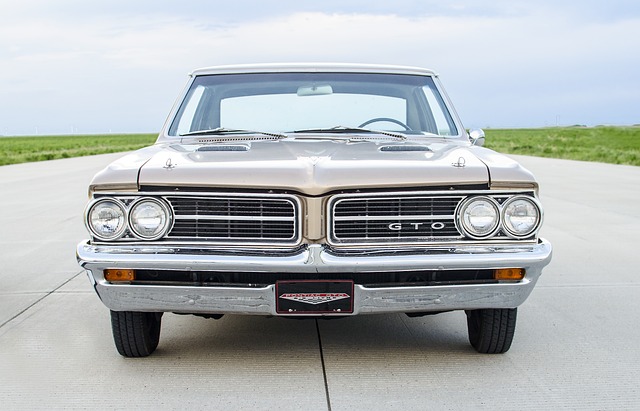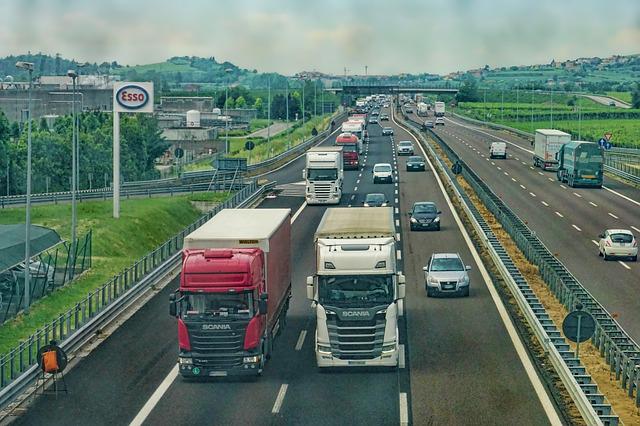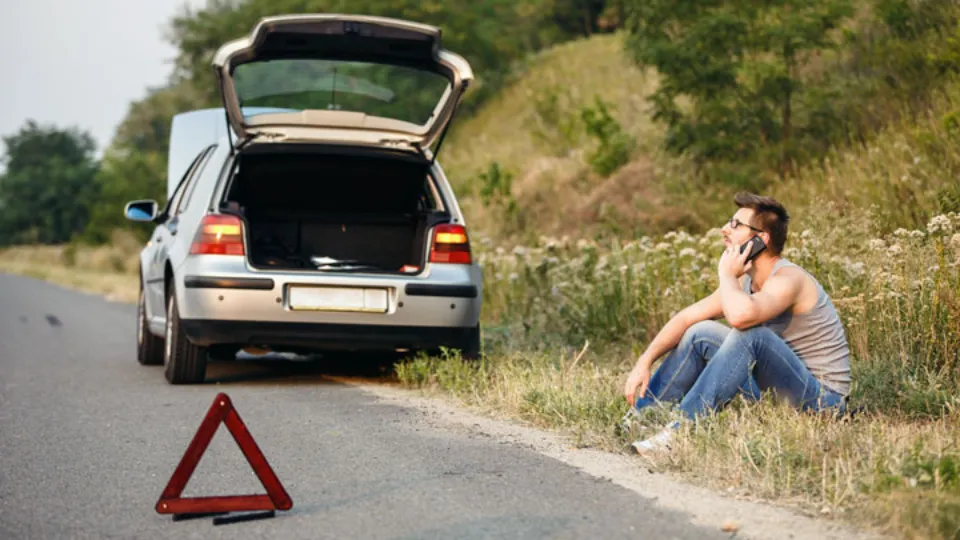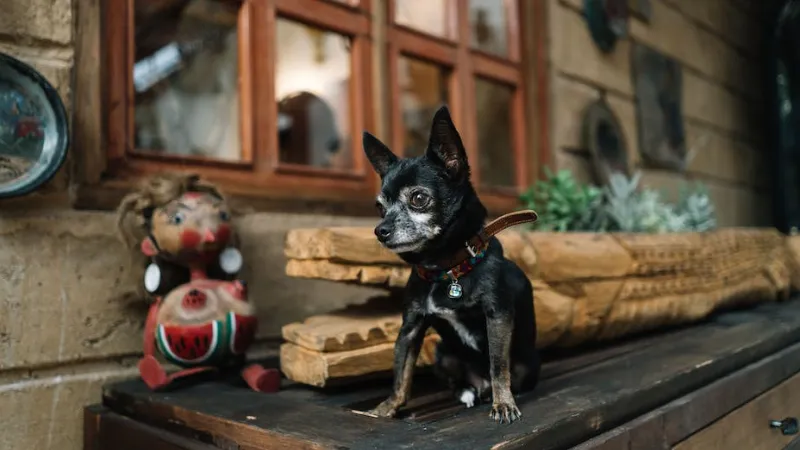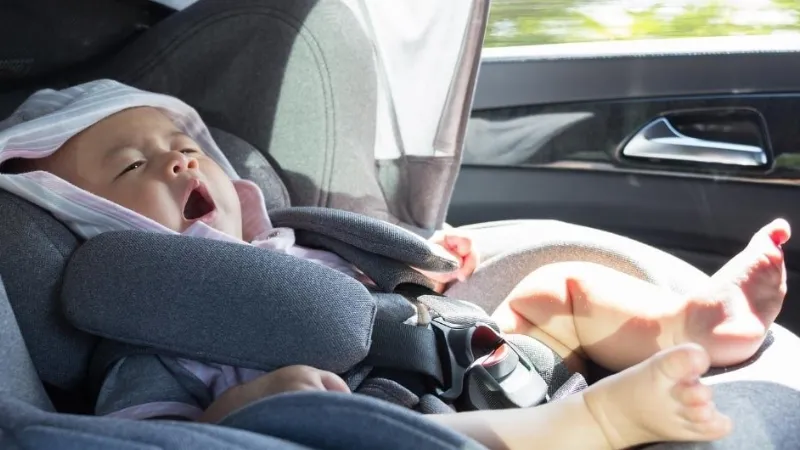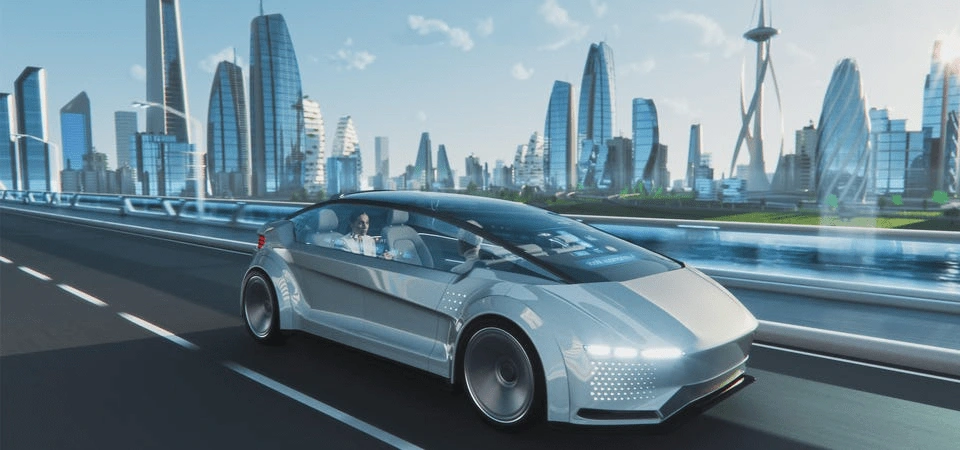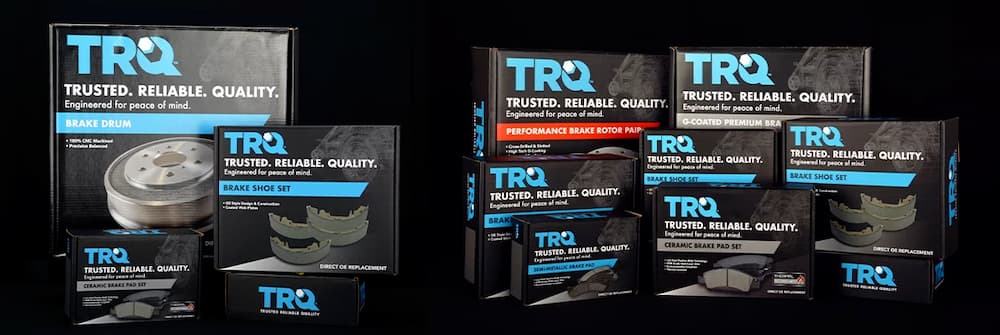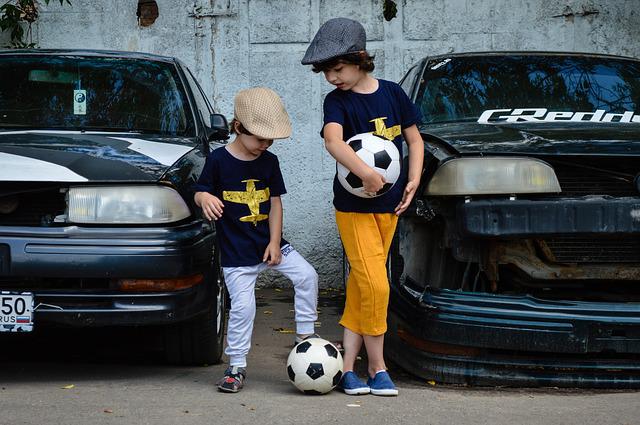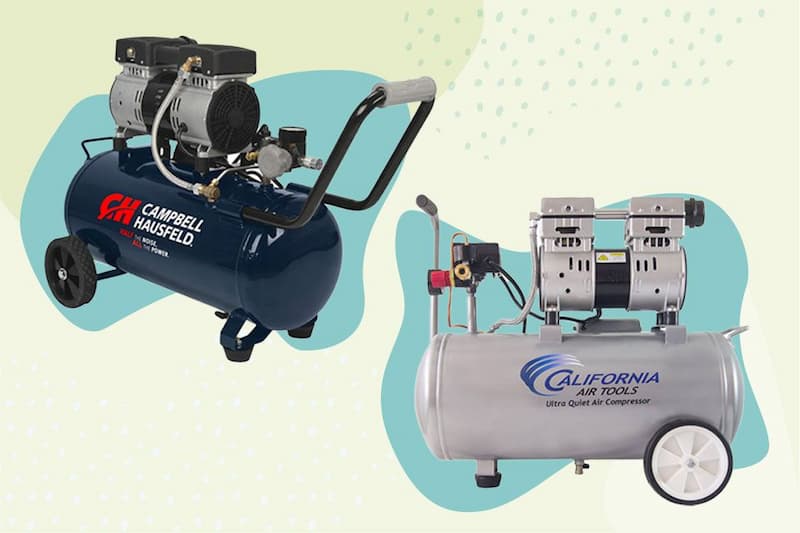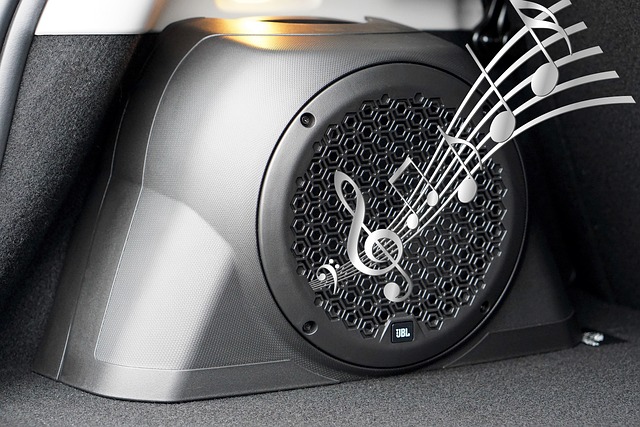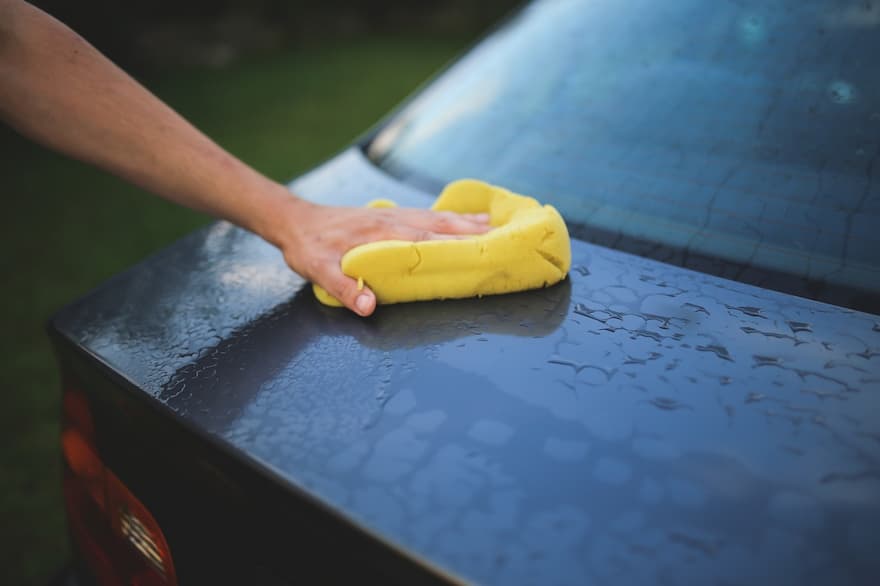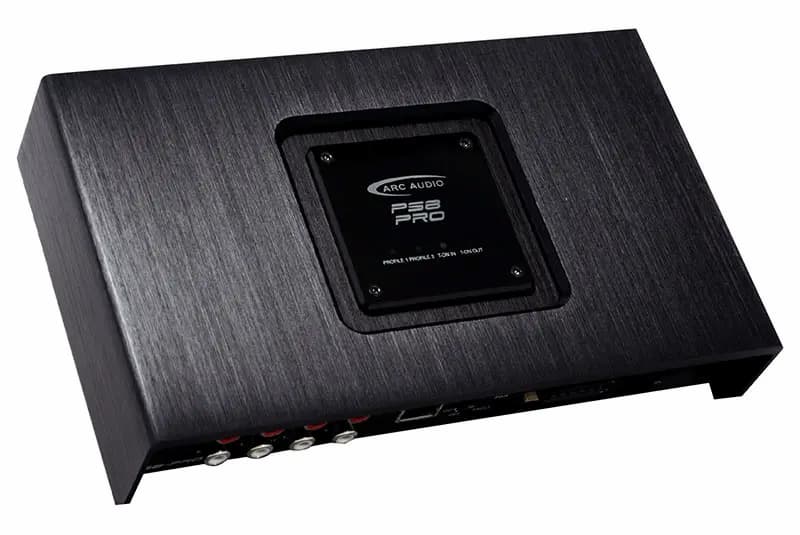Car photography is a broad genre that is practiced by both professionals and amateurs. It’s also a ton of fun and excitement. You can put your photography skills to the test by taking pictures of cars moving quickly, or you can let your imagination run wild by taking pictures of still cars and car details. The best cameras for car photography are listed below because without the proper equipment, it will be difficult to take photos that are worth keeping.
The best camera for car photography include: Fujifilm X-T4, Nikon D3500, Canon EOS 80D, Nikon D850, Canon EOS 90D, Canon EOS R6…
For more information, continue reading.
Table of Contents
Best Camera For Car Photography
Fujifilm X-T4
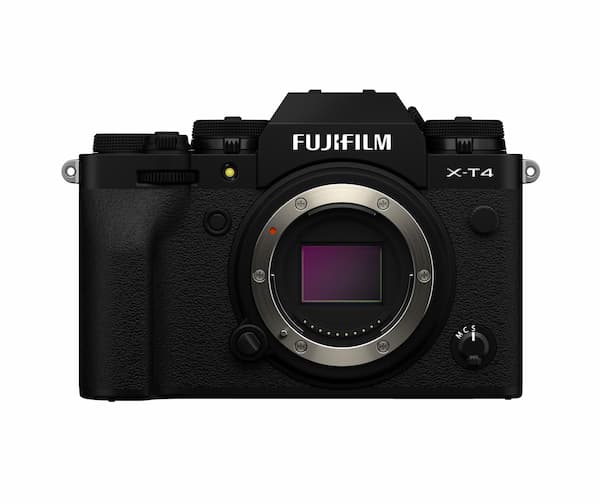
Pros
- 26.1MP APS-C CMOS 4 image sensor
- X-Trans image processor
- AF (Hybrid type)
- ISO range (80-51200)
- Up to 15fps continuous shooting
- Electronic viewfinder
- 5-Axis in-body image stabilization
- Battery life (still images): 500-600 frames
- Fujifilm X lens mount
- Bluetooth and Wi-Fi connectivity
- Ultra-sonic vibration sensor cleaning system
Cons
- Flip-eschewal screens may not be to everyone’s taste.
- It’s not really that small in the lowest shadowing focus area.
The Fujifilm X-T4 is touted as the most potent of the X-series with one of the most sophisticated APS-C image sensors to date, having no exception for stills and videos.
You can feel the increase in interest in automotive photography through this simple-to-use chef-d’oeuvre.
Check it out in the link below to use this camera, which is ideal for car photography, to perform feats never before accomplished.
Fujifilm GFX 100S
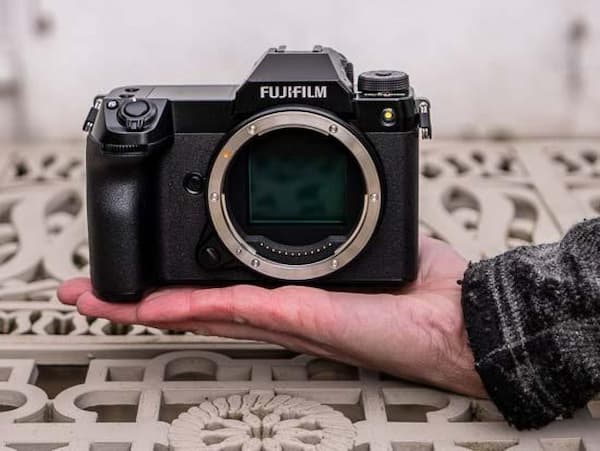
Pros
- 102 MP sensor
- In-body image stabilization
- Compact and lightweight design
Cons
- Incredibly expensive
The Fujifilm GFX 100S comes next in the list. This medium-format camera is ideal for those with a sizable budget and is intended for professional use.
The 102 MP back-illuminated CMOS sensor on the GFX 100S, one of the best image sensors on the market, produces stunning images with amazing detail, contrast, and colors.
Also included in the 100S are a nice autofocus system and in-body image stabilization. As a result, both stationary and moving vehicles can be captured in fine detail.
The camera is still fairly small and light weight despite all of this. The only drawback is the cost, which is close to $6,000. But if you’re a pro, the Fujifilm GFX 100S is a fantastic option.
Nikon D3500
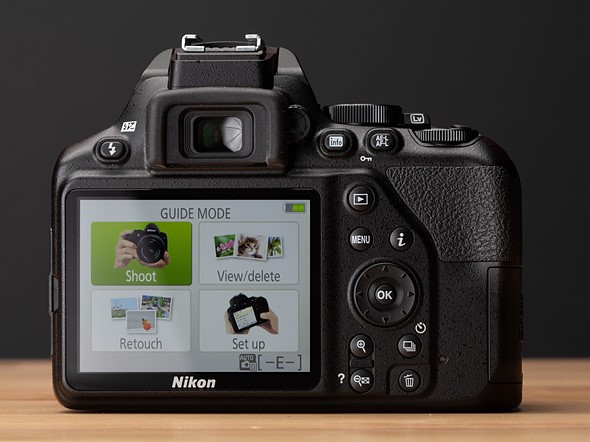
Pros
- 24.2MP DX CMOS 4 image sensor
- EXPEED 4 image processor
- ISO range (100-25600)
- Optical viewfinder
- Multi-CAM 1000 AF sensor
- 11 points of face detection
- Nikon F lens Mount
- Battery life: up to 1550 shots
- Up to 5fps continuous shooting
- Full HD videos at 1080p
- Bluetooth and Wi-Fi connectivity
- Dust reduction system
Cons
- No touch support.
- For videotape, the discrepancy-based live view focuses aren’t the best.
- No mic input.
To put it more succinctly, the Nikon D3500 enables photographers to record 1080p full HD videos of moving objects.
It offers a wide range of qualities at the lowest cost and is crucial in many ways.
Find it at the following link, then buy it to start your business.
Canon EOS 80D
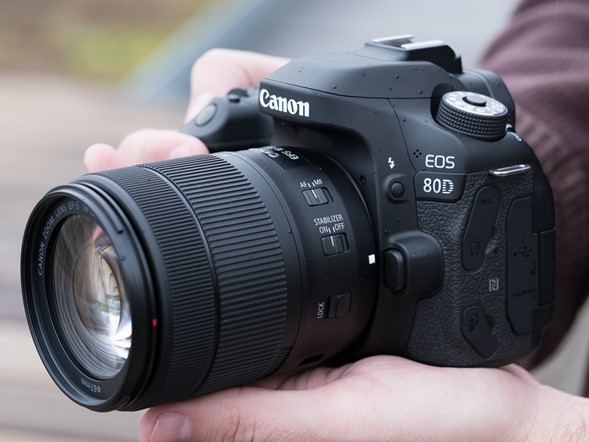
Pros
- 24.2MP (effective)
- APS-C format CMOS image sensor
- AF (Dual pixel CMOS)
- 45 points of face detection
- Up to 7.0fps
- ISO range (100-16000)
- Canon EF mount lens
- Optical viewfinder
- Full HD 60p movies
- 1900mAh battery
- Built-in Wi-Fi and Bluetooth connectivity
- Dust deletion system
Cons
- No 4K videotape support.
- Single SD card niche.
- no connection for PC syncing.
Even with a small budget, Canon EOS 80D has shown itself to be the best camera.
It is primarily designed for the car enthusiast who wants a more modern vehicle at a fair price.
Nikon D850
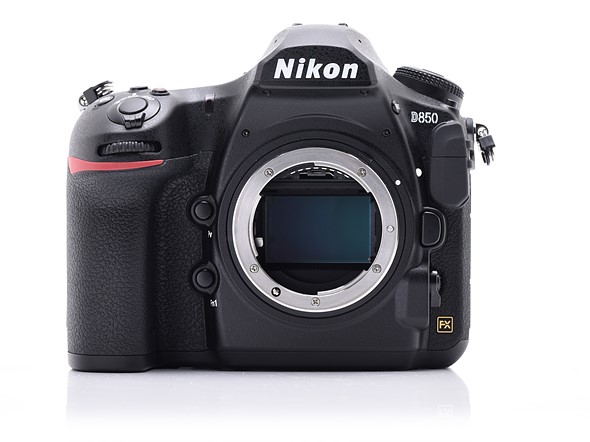
Pros
- 45.7MP FX (CMOS) image sensor
- EXPEED 5 image processor
- ISO range (64-25600)
- Optical viewfinder
- AF (Multi-CAM 20K focus)
- 153 points of face detection
- Nikon F Lens Mount
- Up to 7fps continuous shooting
- 4k UHD videos
- Built-in Wi-Fi and Bluetooth connectivity
- Dust reduction system
Cons
- Live View focus is limited to discrepancy discovery.
- No erected-in flash.
- The SnapBridge system needs improvement.
With the help of this camera, I was able to realize my desire to capture the entire scene in a single shot.
I would say that this is a much better all-around DSLR to brief all of your needs in a single flow.
For auto enthusiasts, it should be considered one of the most consuming masterpieces.
Canon EOS 90D
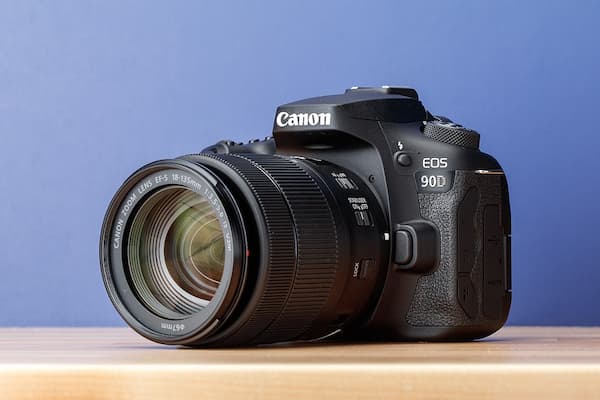
Pros
- 32.5MP APS-C (CMOS) image sensor
- DIGIC 8 image processor
- AF (Dual cross-type)
- 45 points of face detection
- Up to 10fps continuous shooting
- Optical viewfinder
- Canon EF lens mount
- 4k UHD videos
- Built-in secondary battery
- Built-in Wi-Fi and Bluetooth
- Dust removal feature
Cons
- Confined hinder dial.
- No sync socket.
- one niche for memory cards.
In a similar vein, this DSLR had provided me with high-quality, textural images of cars, both during rapid-fire shooting and during still photography.
The features of the Canon EOS 90D have allowed me to produce sharp images, making me an auto enthusiast while I was taking the photos.
For more information about how to improve your marketability, click the link provided below.
Canon EOS R6
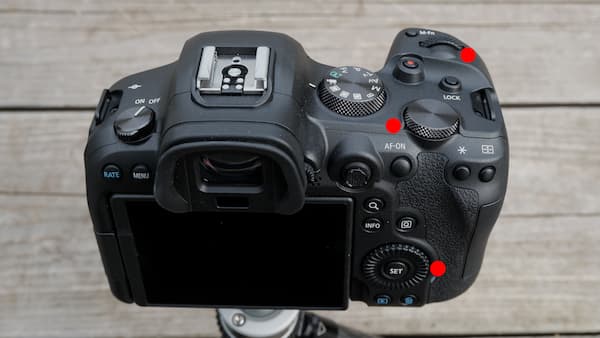
Pros
- 20.1MP DIGIC X CMOS image sensor
- EF lens mount
- Fast dual pixel CMOS AF II
- Up to 20fps shooting speed
- ISO range (100-102,400)
- 5-axis in-body image stabilization
- Electronic viewfinder
- 4k up to 60p video recording
- Bluetooth and Wi-Fi connectivity
- Battery life: up to 380 shots
- EOS integrated sensor cleaning system
Cons
- 4K60 recording limited by heat
- Smaller pixels than utmost challengers
- Battery life could be better
- Lens system still has room for growth
The adaptable Canon EOS R6 is a professional-grade camera.
All of the difficult aspects of automotive photography had not moved it.
It had offered me the chance to improve my design by claiming to be the top Canon camera for photographing automobiles.
Canon EOS R5
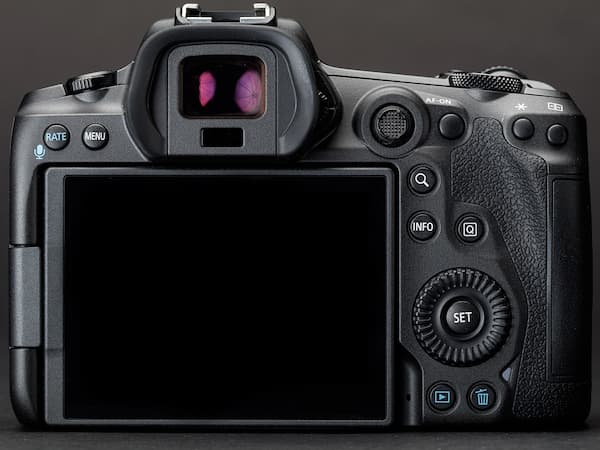
Pros
- 45 MP sensor
- 20 FPS continuous shooting
- Gorgeous image quality
- Fast AF system
Cons
- Expensive
Let’s start with the Canon EOS R5, one of the company’s top mirrorless cameras. No matter your interests or preferences, this ground-breaking camera has some amazing features that make it one of the best cameras for car photography.
A 45 MP sensor and the most recent DIGIC X processor are features of the EOS R5. This implies that you can photograph cars in high-definition with a very impressive keeper rate.
The Canon EOS R5’s incredible AF system, which offers 100% area coverage with 1,053 AF zones, will come in handy if you want to capture moving vehicles. Excellent continuous shooting capabilities on the R5 include 12 FPS with the mechanical shutter and 20 FPS with the electronic shutter.
The R5 can be used with native Canon RF lenses or with many of Canon’s top-notch EF lenses (via an adapter).
Nikon Z7 II
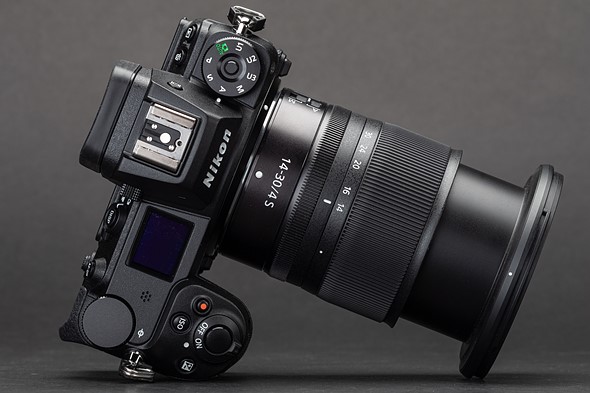
Pros
- 45.7 MP sensor
- In-body image stabilization
- Dual card slots
Cons
- Quite expensive
The Nikon Z7 II is one of Nikon’s top cameras for car photography and comes equipped with everything you need to capture stunning images of both stationary and moving vehicles.
The device’s 45.7 MP sensor provides excellent image resolution and detail. Expect the sharpness, colors, and RAW image quality to be superior.
The excellent 493-point phase-detect AF system on the Z7 II makes it ideal for taking pictures of moving vehicles. This camera should make focusing and subject tracking simple.
We also appreciate that the Z7 II has two card slots: one for CFexpress/XQD and one for SDHC. Comparatively speaking to cameras like the Canon EOS R6, you get a larger overall storage capacity. A wide variety of Nikon Z lenses are compatible with the Z7 II, and with the use of an adapter, Nikon F-mount lenses are also compatible.
Nikon Z6 II
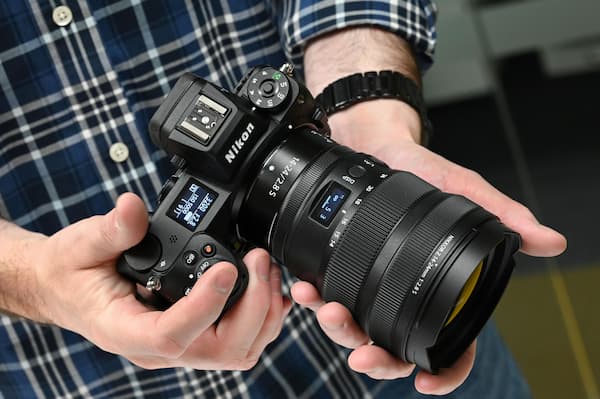
Pros
- 24.5 MP sensor for high-quality images
- Includes dual card slots for greater image storage
- Compact and stylish body design
Cons
- The LCD screen cannot be fully rotated
While Nikon offers the Z7 II and the Z6 II, Canon offers the R5 and R6. In comparison to the Z7 II, the Nikon Z6 II is less expensive and offers a more approachable camera for newcomers to the world of photography.
Despite having a 24.5 MP sensor, the Z6 II can consistently produce images of a high caliber. Its autofocus system has 273 points and a variety of tracking features, but it is not as sophisticated as the Z7 II’s. Its dual card slots, which give you more storage options, are another feature we like.
The Nikon Z6 II has a 14 FPS continuous shooting mode. When you pair this with the quick autofocus system, you have a camera that is ideal for capturing fast-moving vehicles.
The Nikon Z6 II has a stunning appearance and supports a vertical grip attachment. The screen’s partial inability to rotate is its lone drawback.
Sony A7R IV
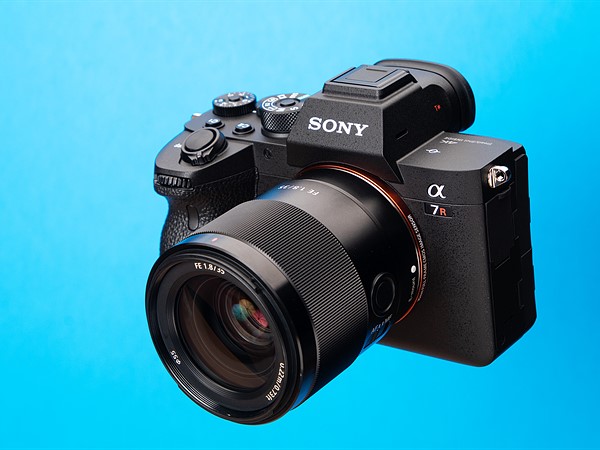
Pros
- 61 MP sensor
- Advanced hybrid autofocus system
- Access to a great range of lenses
Cons
- Relatively expensive
The Sony a7R IV is among the best mirrorless cameras to ever hit the market. Both the image sensor and the autofocus system are excellent. This makes it a versatile camera that can handle both moving and still car photography.
With a staggering 61 MP sensor, the Sony a7R IV provides excellent image resolution and sharpness. Your car photos will have outstanding color, contrast, and detail.
This mirrorless camera features a quick hybrid autofocus system for photographing moving vehicles. It has 425 contrast-detection AF points and 567 phase-detection AF points. This implies that you should be able to sharply focus on moving vehicles and record a lot of detail.
Sony A7 III
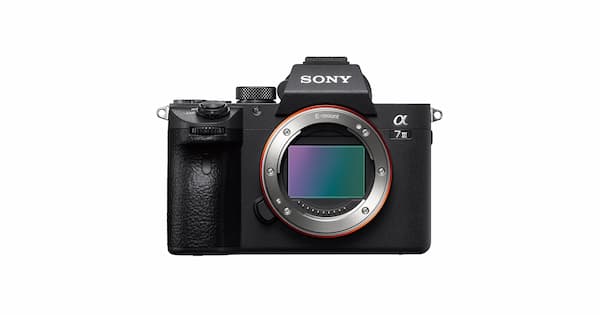
Pros
- Excellent AF system with 93% coverage
- Stylish and compact mirrorless design
- Compatible with Sony’s FE lenses
Cons
- Not as high resolution as the Sony a7R IV
The Sony a7 III is a fantastic option if you’re looking for a high-end camera that is a little less expensive than the a7R IV.
With a remarkable 1.8x readout speed, it has a 24.2 MP BSI full-frame sensor. This makes the camera capable of producing high-quality images in any circumstance, especially when combined with the 15-stop dynamic range and an ISO range of 50 to 204,800. The most recent BIONZ X image processor is also used by the Sony a7 III.
10 FPS shooting with AE/AF tracking is possible with the a7 III. Additionally, there are 425 contrast-detection AF points and 693 phase-detection AF points in the autofocus system, which has 93% coverage.
You can take photos of automobiles in all shapes and sizes with the a7 III’s compatibility with high-end Sony FE lenses. The Canon EOS R6 or Nikon Z6 II are comparable in terms of features and quality to this camera.
Sony A1
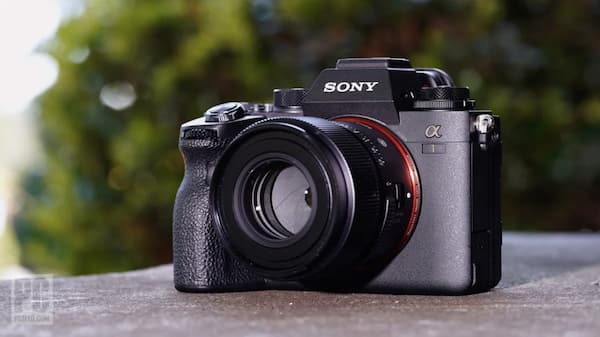
Pros
- 50.1 MP sensor
- Hybrid AF system that offers 92% coverage
- Up to 30 fps continuous shooting with full AF/AE
Cons
- Very expensive
The Sony a1 is the ultimate Sony full-frame mirrorless camera for car photography (in terms of features and price), even though the Sony a7 III is a superb camera.
The next-generation BIONZ XR image processor is one of the best features. You can get incredible shots of moving cars thanks to its incredible power and the 50.1 MP Exmor RS CMOS sensor.
Along with having a 759-point hybrid AF system, the Sony a1 also has a variety of tracking features. With full autofocus and autoexposure, it also has impressive continuous shooting capabilities of up to 30 FPS. The Hi, Mid, and Lo buttons on the top of the camera make it simple to switch between various continuous shooting modes.
The Sony a1 is designed from the ground up for professional photography. The a1 has you covered whether you want to take detailed pictures with the high-resolution sensor or want to track moving cars with the amazing continuous shooting and AF.
Panasonic Lumix G100
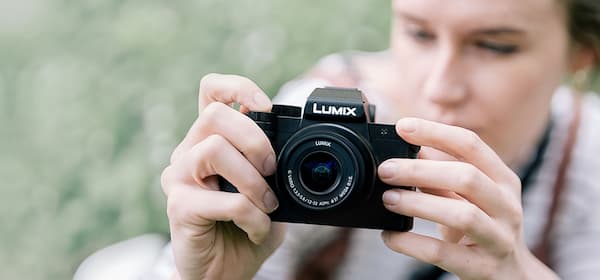
Pros
- In-body image stabilization
- Compatible with Panasonic and Olympus lenses
- High-quality LCD touchscreen
Cons
- May be better for video than photography
The Panasonic Lumix G100 is yet another top-notch low-cost option. Both photography and videography of cars can be done well with this compact mirrorless camera. You receive the Panasonic Lumix G100 in this kit, along with the 12-32mm, a respectable entry-level lens.
A 20.3 MP sensor and built-in image stabilization are features of this Micro Four Thirds camera. With this and the AF system working together, you have a camera that can take stunning pictures of cars in a variety of settings.
The Panasonic Lumix G100 is a good option if you don’t want to carry around a bulky DSLR because it is also a small, portable camera.
Panasonic and Olympus Micro Four Thirds lenses are compatible with this camera. It is incredibly adaptable due to this, and you can find a wide range of lenses for wide-angle, standard, and telephoto car photography.
Olympus OM-D E-M1 Mark III
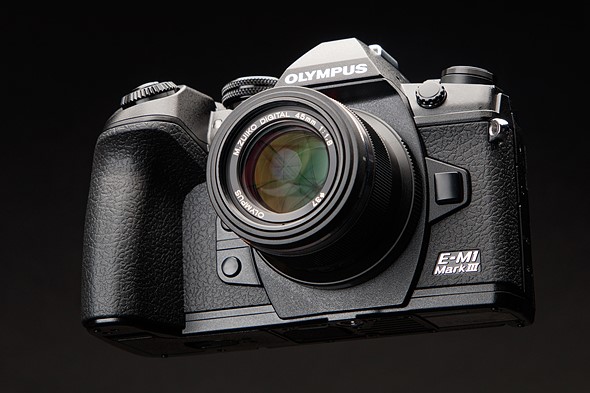
Pros
- Incredible shutter speeds
- Durable dustproof and splashproof body
- High-quality 20 MP image sensor
Cons
- The 60 FPS continuous shooting mode does not have full AF capabilities
The Olympus OM-D E-M1 Mark III is our pick for last place. A number of fantastic features make this Olympus premium Micro Four Thirds camera ideal for car photography. The continuous shooting mode on it is also among the fastest ones out there.
Fantastic-quality images are produced by the E-M1 Mark III’s 20 MP sensor. With 121 phase-detection AF points, the camera has an excellent AF system that will be useful for focusing on moving objects like cars.
But the shutter is the most useful component. 1/8000s is the maximum shutter speed that the E-M1 Mark III’s mechanical shutter can achieve. Along with the camera’s 60 FPS continuous shooting mode, this is fantastic for photographing moving cars.
Dual card slots and a sturdy, weather-resistant body are additional helpful features. Finally, the entire lineup of Panasonic Lumix and Olympus MFT lenses can be used to handle a variety of car photography scenarios.
Key Buying Considerations
When choosing the best cameras for your project, you should take a number of things into account. Here are some suggestions for car photography.
Understand Your Exact Needs
In general, there are a lot of options for car photography cameras, which can be confusing if you don’t know what you want. Understanding your goals first will help you narrow down your list, which is why it is highly advised.
Spend some time learning about the features that are most significant to you. In order to know them, you need to ask yourself what kind of photos you’ll be taking, such as:
- Static, still photos at car shows, car meets, or dealerships
- Motorsports
- Day and night time street car photography
- Rolling shots
Using this knowledge will make choosing the ideal camera for your needs much simpler. See more about Best DSP For Car Audio
Resolution
A good rule of thumb is to select a high-resolution camera because it will capture more detail than a camera with a lower resolution. But it’s important to remember that among a wide range of other specifications, megapixel count is currently pretty low on the list. The quality of the lens, the autofocus system, and ergonomics are more crucial factors because the extra pixels are simply not necessary unless you plan to make large prints.
Lens Selection
Keep in mind that the camera is only one component of your overall kit. While you can get away with just having the stock “kit” lens, for professional purposes you’ll most definitely want several to choose from.
The ideal shot you want to capture will, in most cases, determine the type of lenses you choose.
For instance, you might want to purchase a versatile 24x70mm f2.8 lens for static car photography and car shows. With this lens, you can get good interior shots at 24mm and distant exterior shots. The best zoom lenses for cameras are those that can adjust their focal length.
When you want to take pictures of a car’s interior, a wide-angle lens will come in handy. Everything will fit within the frame when using this lens.
A camera with a wide-angle fixed focal length (prime) lens, such as an f1.8, would be ideal if you plan to take nighttime car photos. A prime lens is lighter, sharper, and allows more light than a zoom lens.
You should also think about the lens’s autofocus speed and whether or not it has built-in image stabilization.
Fast Autofocus
As a car photographer, you’ll either be capturing images of stationary or moving vehicles. A camera with a quick autofocus is essential if you want to capture clear images of moving cars. For a clear photo, the camera will be able to lock the moving object in the frame and maintain focus.
Shutter Speed
You can change the shutter speed on any camera, and a slow shutter speed can help create the impression of speed. For example, take a rolling shot (“roller”) where you’re in one moving car capturing another moving car. The other car will remain sharp and in focus because it is completely still in relation to you while the background will become blurry if the shutter speed is kept slow.
But if you want to get good, split-second shots, the camera should also have a quick shutter speed. You can stop the action in place and get rid of motion blur with a camera that has a maximum shutter speed of, say, 1/8000th of a second.
It should be noted that most mirrorless cameras have both a mechanical and an automatic electronic shutter. The latter doesn’t have any moving parts, so there isn’t a shutter sound and the fastest shutter speed is typically significantly faster than a mechanical shutter. Despite the potential for faster shutter speeds, you should typically use the mechanical shutter when shooting frantic scenes because the electronic shutter can sometimes result in odd outcomes.
Screen
Using this feature, you can photograph the car from various perspectives. If you take pictures from an unusual angle, an articulating or tilting screen will come in handy. For low-angle tracking shots where looking through the viewfinder is impossible, articulating screens are practical. A touch-sensitive screen is now a standard feature on modern digital cameras.
Image Stabilization
Do you intend to use a handheld camera to capture images of a car? When driving, do you ever find yourself taking pictures out the window?
Well, there are a lot of scenarios in automotive photography that happen frequently. The last thing you want is to leave a car show or car meet with shaky videos and blurry photos.
Image stabilization is crucial for this reason specifically. While important for photos, it becomes even more crucial when you’re filming a video.
Because the camera itself eliminates camera shake by moving the sensor, high-end cameras with in-body image stabilization (IBIS) eliminate the need for an image-stabilized lens.
Battery Life
No matter what you’re photographing, having a camera with a good battery life that will last for hours is important. Generally speaking, a good camera for car photography should have a battery life of 500 to 1000 images. Although there are many other factors that can affect battery life, this is a good benchmark.
Weather-sealed
The majority of car photography takes place outside, where you may be affected by the weather. That is why you require a weather-sealed camera in case the weather radically shifts and turns bad. With the aid of this feature, interior camera damage may be avoided.
Connectivity
The majority of cameras have Bluetooth and Wi-Fi connectivity, making it simple to share pictures of your car. If you ever plan to shoot video, some even have micro HDMI, USB-C, and a 3.5mm jack for an external microphone.
FAQs
What Is The Ideal Camera For Photographing Cars?
The Sony A7R IV appears to be the best camera overall for taking pictures of cars.
When used properly, this camera’s autofocus is incredibly accurate and stable; Sony outperformed Nikon and Canon in this regard.
But if you’re not yet able to afford that more recent model, the Sony A7R III performs remarkably well.
Which Lens Works The Best For Automatic Photography?
The best lens to use when taking photos of cars is a wide-angle lens.
Although having the ultra-wide-angle version is preferable, a standard wide-angle lens will usually suffice. Ultra-wide lenses can be a good option.
Which Type Of Camera Do Most Street Photographers Use?
Although there are some unique requirements for street photography, it appears that the Fujifilm X100V is the camera that street photographers most frequently use.
The Panasonic Lumix LX100 II is an additional camera that many people adore.
Can You Take Photos Of Cars With The Nikon D7500?
The Nikon D7500 is a respectable camera overall, but there are many better options available for car photography.
It has an adequate autofocus and shutter speed, but not one that is sufficient for taking photos of cars that are of exceptionally high quality.
Conclusion
Car photography is entertaining and incorporates all facets of photography. Technically speaking, it’s difficult because you might have to deal with moving objects, nighttime scenes, confined spaces, and more.
With the right camera, you can take pictures of cars that accurately depict their features and as the manufacturer would be pleased to display them.
Please post a question in the comments if you have any.

